|
I want to pay tribute to OUT in Thailand magazine and to James Barnes, the editor and brains behind this publication adventure, now as May draws to a close, the first month in more than four years that a printed edition has not appeared on the counters and coffee tables of our gay venues here in the Land of Smiles.
The first issue was printed in January 2011. It was unique among gay periodicals in Thailand in that it was original from cover to cover without articles or features derived from other sources. Readers either read the articles in OUT in Thailand or they missed them. This magazine was written for us. Furthermore, the articles were intended for a discerning readership rather than entirely for tourists to scan between drinks and a trip down the street to one of the massage parlors advertised with a helpful map. James was rightly proud of his exclusive interviews. Some of us wondered how he did it. His scoops led off with an interview of Apichatpong Weerasethakul, winner of the Palme D’Or at the Cannes Film Festival in 2011, and who also got a 10 minute standing ovation this year (2015) for a short film; the interview appeared in March 2011. It was followed the next year by an interview of iconic Boy George (Oct. ’12), Zachary Quinto (the second Dr. Spock in the “Star Trek” series) in May ‘13, and Anderson Cooper in March ’14. He conducted most of these interviews himself, but his major coup of an exclusive interview of Hillary Clinton was done by a friend and appeared in two parts last November and December, 2014. Aside from these once-a-year headline articles, OUT talked about popular culture that gay men are interested in and about gay undertakings – new businesses, gay pride events, and important issues about health and finances. People with a publishing background commented on the stunning format, the photography, print values, and layout, which were unmatched. This went on for 4 years and 4 months getting better and better. It was not long after the beginning that an on-line edition of OUT in Thailand expanded readership several fold and began to attract readers and subscriptions from more than 50 countries. As a regular contributor to OUT, what do I think James accomplished? I’ll just make a list: · OUT continued to emphasize that gay people are valuable in society. · OUT identified role models to show the young generation some heroes. · Readership expanded to include 50% Thai gay guys, unprecedented for an English language periodical. · OUT pushed the prejudices of older white expats here in Thailand. · James kept articles timely and interesting. · The magazine provided health and financial info for gays living in Thailand. · OUT was a valuable resource for thousands of gays coming to Thailand to visit. · OUT encouraged young gay guys to be proud and brave…as proven by testimonials, most of which James did not mention in print. · OUT avoided consumerism of slick-paper gay periodicals that profile gays as up-scale snobs. · James was unfailingly respectful of Thai culture. · He encouraged gay enterprises, artists and writers. · He strove to improve information about gay venues in Thailand and continued to shorten the time between updates, helping travelers find places that were still in operation rather than recently closed. · James pressed Thai commercial enterprises to recognize the size, diversity and purchasing power of their gay clientele. I predict that some Thai gay historian in the future will remind his colleagues of how OUT in Thailand was where the new generation first heard about the demise of the gay-straight binary, the progress toward gay rights in South East Asia, the diversity of gay experiences in Thailand, the need for better sex education, and international gay media. It hasn’t all been about gray-haired foreigners, like me, trying to find good places to go in Bangkok, Pattaya, Phuket and Chiang Mai. The cutting edge hasn’t included us at all, with the possible exception of James and one or two like him.
0 Comments
The unique character of Thai Buddhism is clearest in its rites and celebrations. But there are manifestations of diverse religious elements blended into Buddhist temple art as well. Everywhere you look there are pre-Buddhist hints and extraneous impositions. Sometimes temple art is the main thing that relates Buddhism to its setting and gives it residency. At the same time, often it is art that expands Buddhism’s scope.
Berm is a specialist. He is a temple artist. His main work is colorful temple frescoes. Most village temples have wall paintings. In fact, I don’t know of a Thai Buddhist temple that does not. Traditionally, the paintings are of legendary events in the life of the Lord Buddha. Often there are other sets which portray village history or customs. In the village of Ta Pong, San Pa Tong District, the vihara is adorned with a set of paintings that I think Berm did that show the founding of the village, evolution of the temple and various festivals. Old paintings in a temple in Nan are the most famous thing about the town. This year Berm has been commissioned to produce a set of temple doors and window shutters for a temple in Chachoengsao, east of Bangkok. The panels are solid teak and are about a meter by two meters by an inch and a half thick. The doors are much larger. The work involves finding wood to meet these specifications, which is extremely difficult, and then cutting the panels. They must be sanded to a velvety finish and then carefully covered with 7 to 10 coats of black lacquer. Each coat is allowed to dry and kept free of dust. The final coats are polished to a patent-leather luster. Then the delicate work begins. Every panel is unique. The shutters and doors come in pairs. Each pair is a work of art. The temple in Chachoengsao chose pictures of divinities for their windows. The artist copied the pictures from the restoration project of Wat Ram Poeng (Tapotaram) at the foot of Doi Sutape in Chiang Mai. Using a picture book for reference, Berm produced full size drawings on paper – in the same way stained glass window makers work from what they call a “cartoon”. The cartoon was painted on the lacquer panels by hand and then gold foil was applied. The process gives new meaning to the word “tedious” but the results are spectacular. In the pictures accompanying this account we see the cartoon of พระพาย the god of storms and the finished panel ofพระพิรุณ the god of rain. The pairs of window panels Berm has finished include the following: พระวันทร์ the god of those born on Monday, holding a lotus in full bloom, astride (standing on) a horse พระอาทิฅย์ the god of those born on Sunday, holding a bow, astride a lion พระพุธ the god of those born on Wednesday, holding an open scroll in the right hand and a lotus in full bloom in the left, astride an elephant พระอังคาร the god of those born on Thursday, holding an axe in the right hand with his left hand at his side, astride a buffalo พระศุกร์ the god of those born on Friday, holding a sword in its sheath with both hands, astride an ox พระพฤหัสบดี the god of those born on Thursday, holding a cudgel, astride a golden stag พระยม the god who judges and protects all spirits in the world of hell, the god of death, holding a bared sword in his right hand and a flower (or feather) in his left, astride a barn owl พระเสาร์ the god of those born on Saturday, holding a shield in his right hand and a bared sword in his left, astride a tiger (he is the son of พระอาทิตย์ ) พระอัคคี the god of fire and therefore of cremations, with his right palm in the attitude of forbidding or preventing and with a hand-held trident in his left, astride a horse พระโสมเทพ the god who dispenses light in the evening, deity of beauty and attractiveness, and also god of liquor (intoxicants), astride a deer พระพิรุณ god of rain, holding an open lotus in his right hand and a bared sword pointed downward in his left, mounted on a Naga พระพาย the god of wind and storms both on earth and in heaven, holding a sword with the point upward in his right hand and a curly cloud or wisp of wind in his left, astride a deer พระแม่ธรณี goddess of the land and of earth, standing on rocks wringing out her hair พระราหู god of those born on Wednesday night, holding a bloom in his right hand and a large orb (or rattle) in his left, astride a giant To a large extent these panels define Thai design. The complex curves are characteristic of Thai design. The work is organic rather than geometric, but absolutely symmetrical just the same. There is no attempt at perspective, but every effort is spent on intricate detail. The lines fold and undulate, overlap and disappear in ways that are hopeless to follow but never random or haphazard. The effect is to force the observer to pay attention to the central figure and fathom its meaning and identity from clues that are all but hidden. For example,Phra Pi Run’s partner Phra Pai, the god of storms, has a bolt of lightning amid clouds over his head, rendered in about five lines buried among intricate details. The significance of the characters are underscored by the way they are astride their mounts, standing with their miniature beasts beneath their feet, in the same way that divinities in Egypt and Babylon were larger than the minions worshiping them. In Asian art it is a sign of reverence to be symbolically beneath the feet of divinities. But why are Thai Buddhist temples featuring divinities at all? A monk speaking at an international conference in April 2015 asked this question, and concluded the laity are uninformed when they include reverence to divinities in their faith system. Divinities, the monk insisted, were a pre-Buddhist way of propping up the social hierarchy with a parallel sacred hierarchy. The solution, the monk proposed, was better education. It probably does not undermine the monk’s argument to point out that most temple art without direct Buddhist reference are not gods, but portray classical creatures derived from the Ramakien, and demi-gods like those that abound at Angkor Wat, both sources which are important mythic supports to the concept of Thai royalty as semi or somehow divine. This line of reasoning, that the laity need to be educated away from interest in gods and divinities, is common among Thai Buddhists with advanced education – and (I dare say) whose perspectives are at a distance from village life with its dependence on the thick mixture of supernatural with doctrinal-scriptural practices. Academic Buddhists spurn supernaturalism as superstition and work to reduce its influence. But supernaturalism is an aspect of popular Buddhism that defies argumentation. Only superior art will succeed against it. In an effort to wean laity away from attention to gods of the days of the week, images of the Lord Buddha in various poses for various days of the week are now being featured. The reclining Buddha represents Tuesday, for example, rather than Phra Ankarn. It is entirely possible that the best known secondary school in the world is fictitious. It doesn’t exist, at least not in the same sense as Harrow and Eton. But, to borrow a phrase, just because Hogwarts School of Witchcraft and Wizardry exists only in the imaginations of millions of Harry Potter fans “why on earth would that mean it is not real?”
I am a die-hard Harry Potter fan, as readers of this blog may know. Earlier in the year I composed an essay on “Wisdom from Wizards about Death” and now I have one on “Hogwarts Education”. I think I am in the process of writing a full-length set of reflections on the worldview of Harry Potter by which to get a perspective about our own Muggle world. To see if you are a Harry Potter fan just ask yourself, (1) do I have an opinion about whether Luna is more imaginative than Myrtle? (2) Does Dudley have any pets? Fans know that Luna Lovegood is probably the brightest student in her year and second only to Hermione, and Dudley Dursley can’t even keep his solid steel possessions whole, so he’s never been given a puppy and besides his mother’s a neatness freak. If you, too, are a Harry Potter fan who has read the 7 books and seen the 8 movies I would direct you to the essay. Find it here: Hogwarts Education. Feel free to skip the rest of this blog. If you are not a Harry Potter fan let me cut to the chase. I believe that the most important aspect of educating young people between the ages of 10 to 20 is character development. This is apparently not widely identified as “most important” because few schools measure student character development and presume to have any responsibility for it. It is on no report cards or transcripts. Forging ahead with my little contribution on adolescent educational philosophy, I think there are two basic aspects of character development: SOCIALIZATION and INDIVIDUATION. Socialization involves acquisition of (1) appreciation of human diversity, (2) disdain for artificial qualifiers for respect and dignity, (3) concern for the disadvantaged, (4) commitment to the general well-being. Individuation is the process of becoming able to distinguish one’s self from one’s context and from confusion about self. I contend there are four indicators of success: (1) sensitivity to a transcendent and aesthetic dimension of life, (2) resourcefulness, namely skill in application of intelligence and imagination, (3) strength to overcome adversity, (4) discovery of self (one’s authentic identity). The individual student, parents, and school are in a 3-way partnership to achieve these goals of secondary education. The partners must be clear about how each partner is independent and yet cooperative, otherwise character development will fail to be an educationalundertaking. Character will develop even if one or the other of the partners is not functional or if certain elements are missing, but the end result will not be as complete and multi-faceted as it could be. Finally, suppose that character development and spiritual formation are, as I have suggested, the most important educational undertakings of the adolescents of the world for their own worth and for sustaining humanity and suppose that we are not intentionally doing it. What could we expect except that great battles will take place to make up for this fundamental failure of civilization? I personally hope we can quit having these culture wars and stop making schools the battle grounds. Let’s say we can divide my life into three 25-year segments, and let’s call the anniversaries jubilees.
The first jubilee came in May 1965. The first 25 years were all about growing up and becoming me. I graduated from full-time higher education on my 25th birthday, May 14, and was ordained into full-time Christian ministry in the Presbyterian Church USA two days later. Then I came to Thailand and began ministry. This career involved three decades of pastoral work as a missionary in Chiang Mai, Thailand and as pastor of churches in Ohio and Illinois. During this time our family life evolved. I explored writing and photography as avocations. The third segment was one of dizzying change. Our two children began lives on their own. My first marriage ended and a radically different one began. I undertook a new form of ministry that settled into higher education administration. I established my identity as gay and thereby withered my relationship with the church. Now, at the end of the third jubilee on my 75th birthday I am engaged in a full-time avocation of eclectic writing. If I were going to list life accomplishments they would necessarily be of two types: those that have lapsed and need not be remembered by me because nobody else does, and those that have been continued until now new generations have taken them over and well know what an accumulation of contributions made that happen so that my small bit matters less than those of others. On this anniversary it is my life evolutions that I want to inventory. 1. I began as a white farm boy, discovered a world of cultures of color and became color-blind, a condition some still insist is impossible until they see the color-blended life I live. 2. I marched, sat and sang for civil rights, feeling caught up and changed and at odds with my heritage. Then I was caught up and changed by the cold war, being right where its hot front edge was being launched from air bases in Thailand and going back to where it was being opposed in the streets in Chicago and Ohio (think: Kent State). Now I am again caught up as the church shudders and agonizes over gay rights and dignity. I envy the pastors I aspired to emulate who did not find themselves in the loyal minority on every big issue of our times. 3. I dedicated myself to a career of church leadership, prospered in that role, discovered the church was unwilling to requite my commitment if they could not dictate the risks, and had to come to terms with being retired from church leadership. 4. I have developed a level of regret I did not see coming that the Christian Church has chosen to be adversarial with regard to other varieties of faith. I simply fail to see how any of our world religions has a basis to be ungrateful for insights from the others. More than anything, I am grateful for friends and family who have endured and sometimes enjoyed my enthusiasms, crises, changes of lifestyle, and mutating goals. NOTE: Click on the individual photos above to expand for a larger view.
Subjata ceremonies are part of house blessings and other major life events here in North Thailand. I categorize them as “life extension” rituals. Last week our village had a Subjata ceremony for the whole village. A Subjata ceremony is a significant event that requires a lot of preparation. The most important aspects are (1) tying a white string around the designated area to identify it and connect it, (2) preparing a ceremonial tripod with traditional offerings attached, (3) honoring the spirit of the land with chanted invocations, (4) assembling an auspicious chapter of monks to chant, (5) connecting all the participants symbolically through a grid of string, (6) burning symbolic lengths of string and candles to signify the cancellation of the past, (7) concluding with poured water as pledges and benedictions are chanted. Men and women worked throughout the day before the ceremony to braid string into 3-strand cords and then into 9-strand cords. Other teams strung string down every road and lane with a loose end to connect to every household. The home owners then encircled every house and building in their compound and tied an end to the string left dangling at the gate. All this string, of course, was tied to the temple and the main images of the Lord Buddha inside. Other teams erected the tripod, produced leaf baskets of symbolic offerings, and got food, drink, seating and tent-shade ready. Early on the day of the ceremony five priests with assistants lit candles and incense at the ceremonial center of the village where a banana stalk pillar, waist high, supported a plus-shaped cross on the tips and center of which were placed five of the little baskets prepared the day before. Four other priests also chanted and made offerings of one little basket each in the four cardinal directions around the village. The main ceremony started at the auspicious hour of 9 when the last of the 7 priests arrived. Baskets were once more offered at the four corners of the village hall. The chanting was all about aligning supernatural powers, affirming that Dharma is supreme as the Lord Buddha discerned, and that all other powers were appeased and duly respected. There was doubt that the village was uniformly respectful, in fact. That was the reason for the ceremony. It was precipitated by a family of “outsiders”. As the story is told, about two years ago a woman from Hang Dong (the next town east of here) bought a plot of land and built a small house with gardens and ponds for her mother. The house was finished and the mother was moved in. None of the traditional house blessing ceremonies were held as far as we know, and we would know if they had been. After a time, the old woman did not thrive in this home. She was often sick, and then she died right there in the house. Her body was removed, also without any ceremonies. According to ancient tradition the “spirit of the land” should be informed and asked to agree to such disruptions of territoriality as building a new house, digging wells and ponds, and especially taking up residence and ending residency. When the old woman died in the house it confirmed the villagers’ concerns that the “spirit of the land” had been disturbed, possibly angered, and it was time to make amends. No one wanted the angry spirit of the land to go on a rampage and for unexplained trouble to become widespread. Hopefully the Subjata ceremony averted trouble. It may be the story is not yet over. As a village we will wait and see. As far as the dead woman is concerned, it all depends on whether her ghost was able to follow the corpse as it was removed and taken to Hang Dong where the funeral was held. If the ghost/spirit did not get lost there is every reason to believe it stayed near its departed host and made its way to heaven to await reincarnation. If it was not able to follow, it might be hanging around the house growing distraught. We will wait and see. What is a Christian view of this? (a) I think the old woman’s daughter mishandled this from the beginning by being disrespectful of community customs. The comment most often made is, “They had nothing to do with the village.” That was alarming and unfriendly of them. (b) These perspectives on the supernatural are not local. They are all over the North of Thailand and beyond. The anxiety this family caused cannot be attributed to ignorance, but only to disregard. We all believe the daughter simply does not care what anyone thinks around here. We have no idea what issues lie behind this attitude. Nobody thinks the daughter is a secular atheist, nor is there evidence she is a Christian – both of which might choose to have no “traffic” with the supernatural (also called animism or the occult). We think she is anti-social. (c) Had the mother been a Christian, it would have been helpful to reassure the village that the dead woman’s ghost has found rest far away from here in Christian paradise, and will not be disturbing the peace of the village. It would have been a sterling opportunity to interpret the Gospel. It is generally agreed that the Christians’ God can handle the lords of the land. It is a territorial matter. When God of the Christians takes over a territory, other gods and spirits depart. Until there are more Christians and people have more trust in the Christian message, parallel domains is how living together works here in the village. |
AuthorRev. Dr. Kenneth Dobson posts his weekly reflections on this blog. Archives
March 2024
Categories |
| Ken Dobson's Queer Ruminations from Thailand |
|
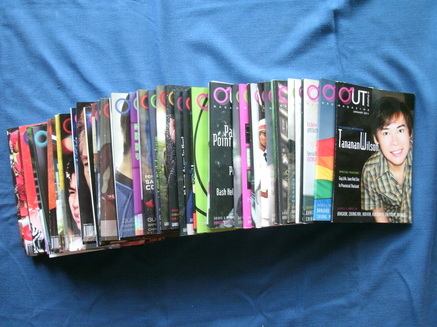
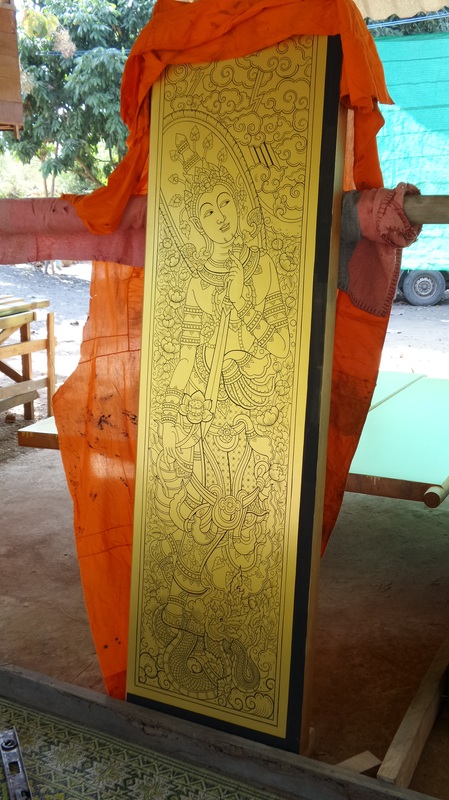
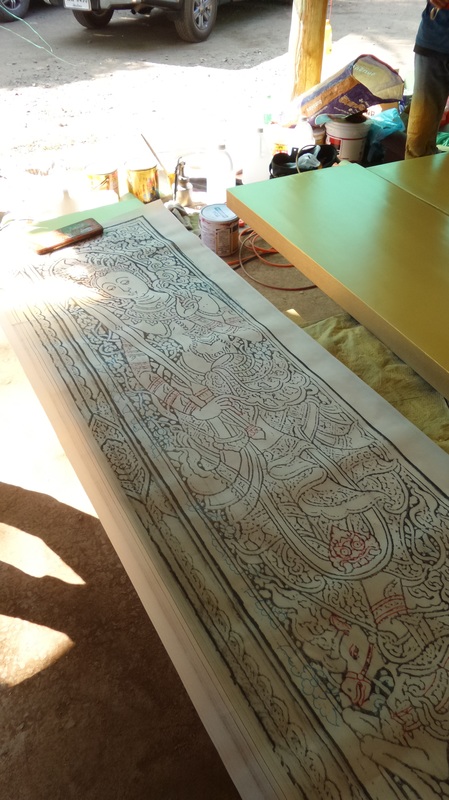

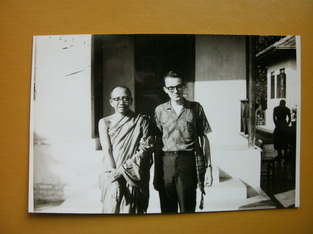
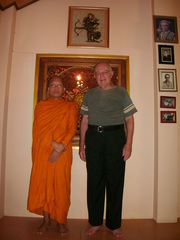
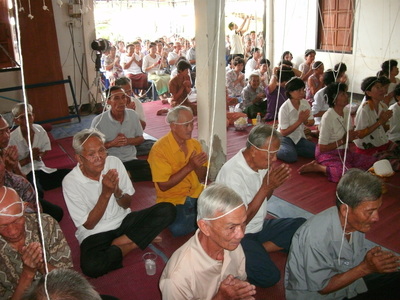
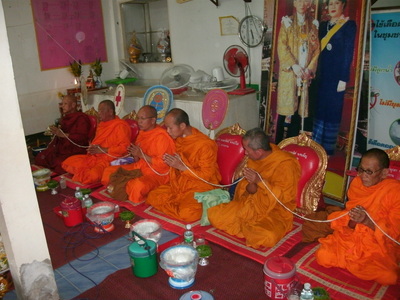
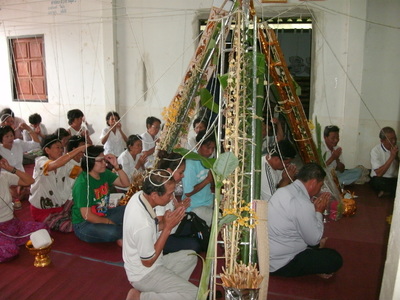
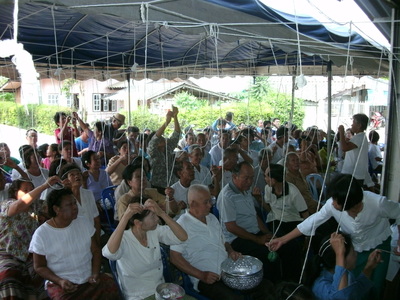
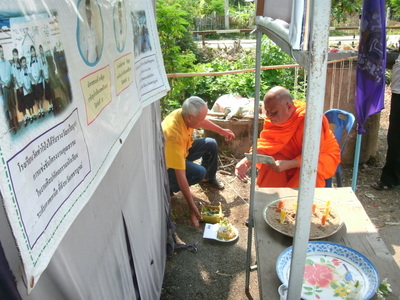
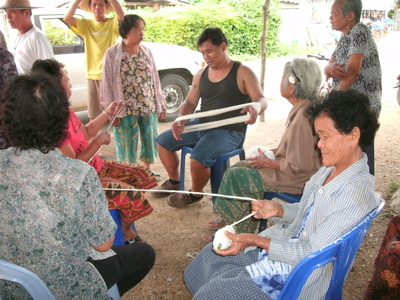
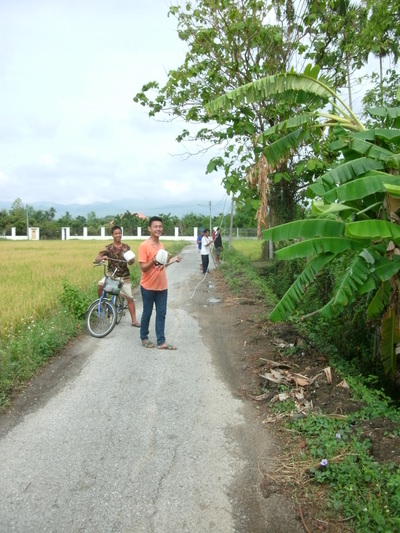
 RSS Feed
RSS Feed
